The Nuances of Different Wools: Sheep Breed Classifications
When hand spinners first come to making their own yarn, one of the sentiments I often hear is some variation of, “I want to spin my own yarn from washing and processing the raw wool to preparing and spinning, before using that yarn to create cloth.” A major hurdle for new hand spinners to learn is about the fibres they have the opportunity to spin. Many of us dive down the rabbit hole quite quickly to begin sourcing sheep fleece but knowing a bit about the different classifications of wool can assist each new spinner on their journey of choosing and successfully spinning different wool types.
When we talk about wool classification, we are discussing the type of fleece that specific types of sheep produce. Learning about the different classes of wool, and the sheep that produce those wools, assists in being able to match a good wool to an appropriate fibre preparation for a lovely spinning experience to create wonderful fabric, specifically for this project at this time. Another wool may have accomplished the task as well but having confidence in our choices allows freedom to then push the boundaries as we learn and progress in our journey.
This Craft Guide introduces sheep and their five wool classifications, celebrating what makes spinning different wools so amazing. For reference, the five classifications of wool include Fine, Medium, Longwools, Down and Down-like, and finally, Double-Coated or Primitive Breeds. Finally, we will explore why spinning a variety of wools in our learning journey is important and leave you with some ideas to experiment with as you continue learning. A wonderful place to begin this journey is by working through a Breed-Sampler, such as the ones available on SweetGeorgia’s website, which takes you through each classification with about 2 ounces / 57 grams of each wool. This is a good amount to sample and play with, before committing to a larger quantity.
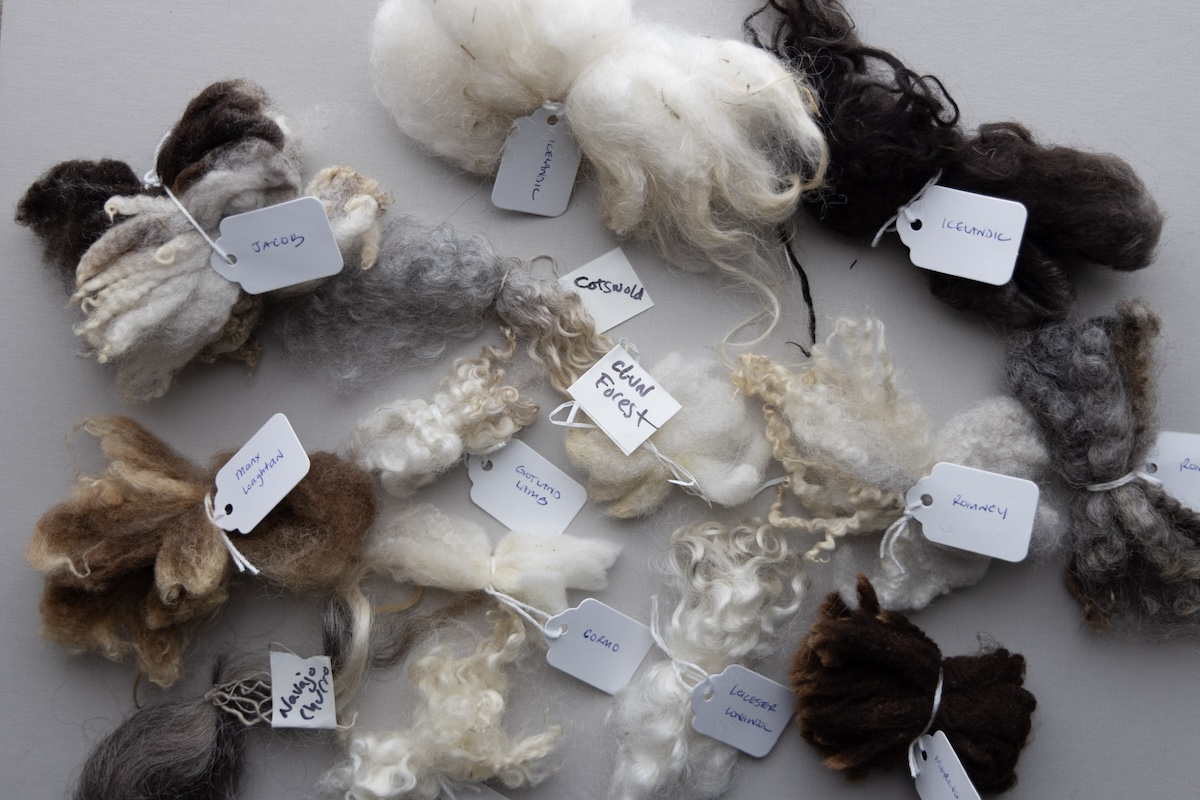
Think of how wool is classified as being on a continuum.
At one end, we have the Fine Wools with much crimp and bounce. At the other end, we have the long, lustrous, curling crimp structure of the Longwools. In between are the Medium Wools which, depending on their micron count, fit closer to the Fine Wool versus Longwool end. Micron count uses computer imaging to assess the diameter of a fibre. The lower the number, the finer the fibre and conversely, the higher the number, the coarser the fibre. Within one fleece, micron count might vary significantly and as hand spinners, we use the averages to help communicate roughly how fine or coarse a fibre is. For those new to understanding microns and wool classification systems, note that the language used to classify wool and fleece commercially is slightly different than what we use as hand spinners. Here, we will use micron counts, whether they are low versus high, to describe finer versus coarser fibres respectively. With finer micron counts in mind, let’s begin our discussion of Fine Wools.
Fine Wools: More Than Just Merino
When spinners think about spinning wool, they are most likely thinking about these wools – the Fine to Medium Wools that we see on the market everywhere. They are available in a myriad of preparations, from raw fleece to processed combed top, and in natural shades, as well as dyed. Thinking of the spectrum of Fine to Longwools again, these are the finest of the lot, and include sheep breeds such as Merino, Polwarth, Targhee, Rambouillet (Spanish Merino), Corriedale and many more. They have the smaller micron counts, making them next-to-the-skin soft, with the most amount of crimp. This crimp structure is often uniform across the dense locks, as well as the fleece, making for an enjoyable spinning experience because of the uniformity of the staple length and bounce from lock-to-lock. The lock structure of the Fine Wools can be described as blocky or square, meaning the tip is flat (Falkner, 2018; Smith, 2014). Adding more twist to these yarns helps prevent pilling and increases durability.
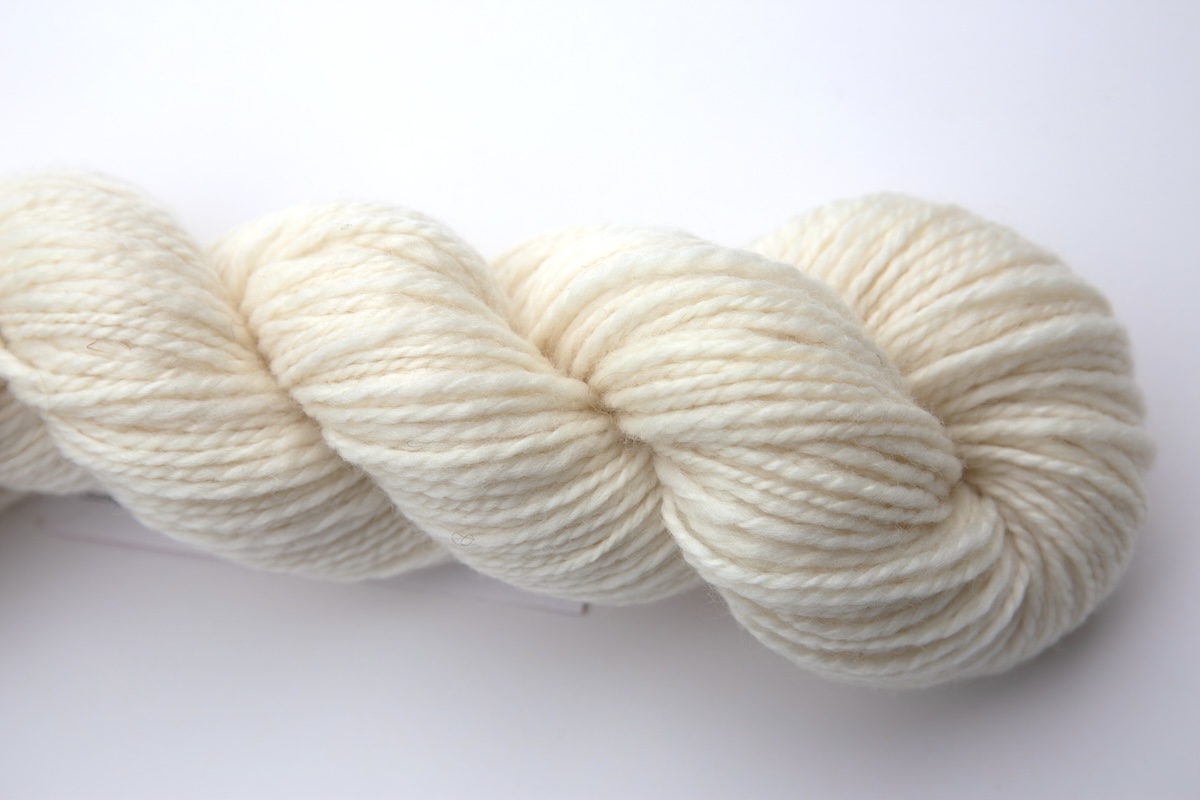
While the finer wools have the most amount of grease, or lanolin, compared to other classes of wool, this just means more washing and scouring to ensure those locks are clean. Washing lock-by-lock or in small batches ensures the wool comes out clean and ready to be prepared for spinning. Be aware of the increased risk of felting during the washing process.
Locks from Fine Wool fleeces tend towards the short side, usually a maximum length of 5 inches or 12.5 centimetres. This shorter staple length lends itself towards either worsted or woollen spinning to create light, bouncy, lofty yarns. These fibres can easily be carded on hand cards or drum carder and, if long enough, combed for a worsted preparation. Using worsted-style drafts, like a short-forwards, short-backwards, or a continuous-backwards with smoothing, and not allowing any twist between the drafting and fibre-supply fingers, creates stronger, durable yarns that remain next-to-the-skin soft.
Medium Wools: An Extension of Fine Wool Spinning
The Medium Wools are some of my favourites because as Beth Smith puts it, “Medium wool often gets overlooked, in my opinion, because medium makes us think of just average or not special” (2014, p. 100). Some claim that Medium Wools aren’t really a category, and I think of them as being in the middle of the continuum from fine-to-long wools. Many wools, like Corriedale, Romney, Finn, BFL and so on, can be classified into either fine or long wools depending on the staple length and fibre quality (Faulkner, 2018). I’m inclined to agree from the standpoint that many of the Medium Wools I’ve spun have a fine enough micron count for the fine wools or are so long-stapled that they are easily classified into the Longwools category, which negates the medium wool classification.
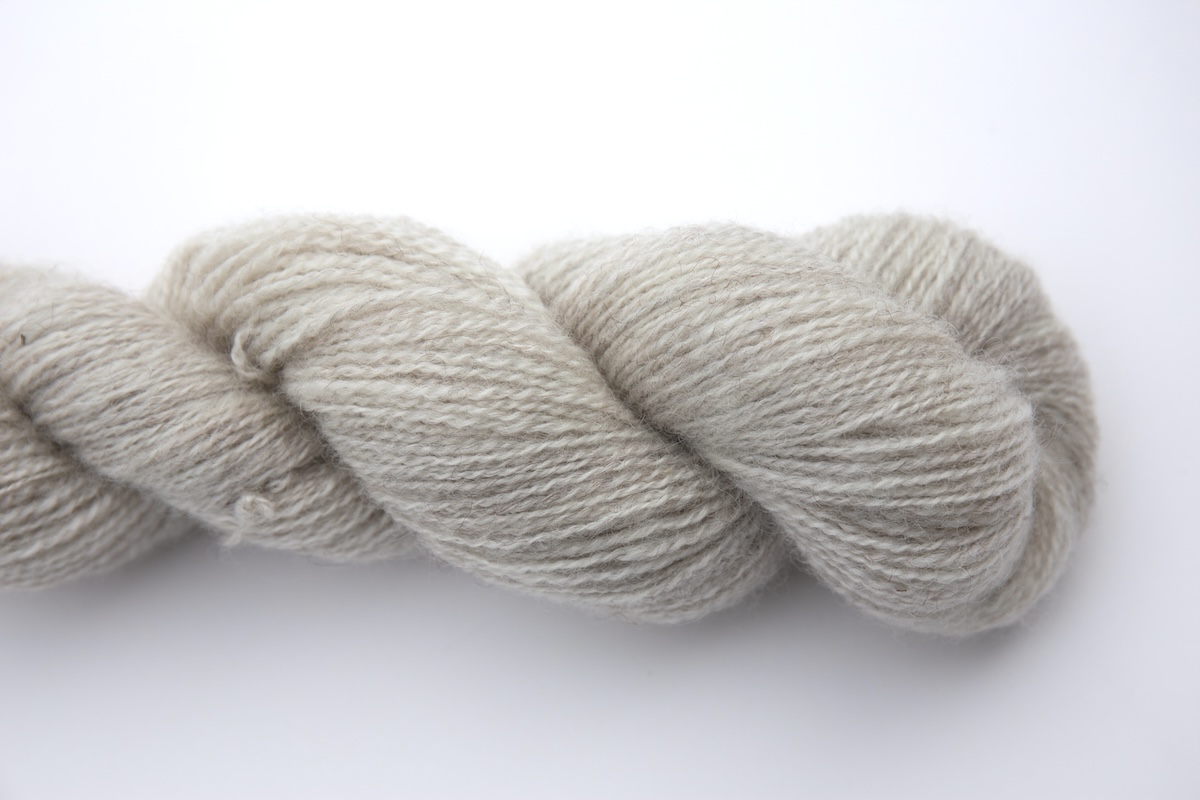
Medium Wools are often classed as having a micron count in the 20s, which places the bulk of much of the fibre hand spinners spin into this category. Wools like CVM, Masham and Finn are more medium with their high 20s- and even low 30s-micron counts. In the commercial space, up to about 24 microns is generally wool for garments but higher is left for other textiles. For some people, higher 20s and low 30s will still be next-to-the-skin soft but for others, this will be too coarse. Sample and determine where your threshold is. Remember that outerwear sweaters are often not next to our skin when wearing!
As with the Fine Wools, these heartier wools can be spun from worsted or woollen preparations, using worsted or woollen-style drafts. They are incredibly versatile, probably the reason they are the backbone of every hand spinner’s repertoire. Depending on the staple length, these wools can be carded, either by hand or drum carder, blended on a blending board, or combed. Medium Wools are the absolute best for exploring new ways to prepare the fibres, especially those newer to fibre preparation because they are resilient, slightly stronger than the fine wools and versatile. Trialling all of the spinning drafts, from worsted to woollen, on these different fibre preparations is a wonderful way to learn the drafts and experiment.
Longwools: Long, Lustrous Locks
Oh, the Longwools. The lustre! The strength! The combing! They are just divine. Another large category of sheep, the Longwools have much to offer hand spinners. Some breeds that you may have heard of in the Longwools category include but are certainly not limited to, Blue-Faced Leicester (BFL), Wensleydale, Teeswater, Lincoln, Border Leicester, Leicester Longwool, and Romney.
Lincoln and Leicester sheep are the foundation of the Longwool breeds. Some Longwools are included in the classification because of the lock characteristics, such as length and crimp structure, even though they are not related to Lincoln or Leicesters. The staple length of Longwools starts at 6 inches or 15 centimetres and features a spiral or wavey crimp structure. Some Longwools have a crimp structure similar to the fine wools with fewer crimps per inch. On average, the Longwools have between 3 – 6 crimps per inch.
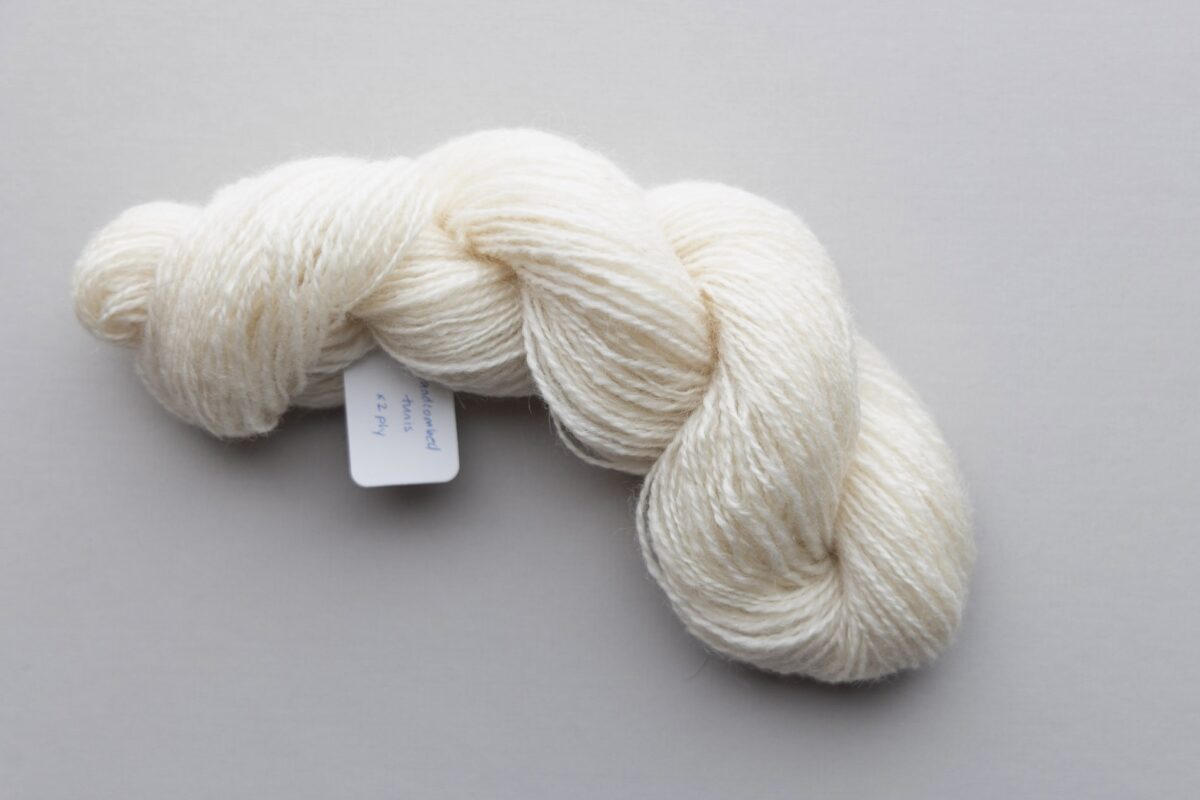
Their lock tips are pointed, creating a triangle shape, and tend to be dense and heavier, especially when compared to the fine wools. Thinking in terms of the spectrum of micron count, the Longwools are anywhere from 24 – 41 microns. Some will be able to tolerate low-to-mid-20s against their skin, while others will not, so think about outerwear, such as cardigans, jackets and mittens, and weaving, such as rugs.
Because these wools create a halo in the finished fabric, testing and sampling the fabric for its intended purpose will be necessary to avoid disappointments. Deborah Robson has discussed cutting off the tips of longwools to lessen the halo and ‘itch factor’ – this can be a game-changer for hand spinners. I will often use my thumbnail and pointer fingernail to pull the tip off after washing to lessen the ‘tippy’ factor. This also helps to prepare the wool more easily once I start combing or carding (depending on the staple length).
The Longwools can be prepared in a woollen fashion but check the staple length first as the longer fibres can get stuck on the large drum (swift) of a drum carder, which can cause difficulties when removing the batt. As well, preparing the Longwools in a woollen fashion eliminates the lustre as the misaligned fibres will not reflect the light in the way the worsted-spun fibres are able to. Creating woollen preparations from some of the Longwools adds warmth to the yarn and sampling can help ascertain what preparation is best for the end-use of the fabric. As well, due to their density, the Longwools will create less yardage than Fine Wools. Take this into account when preparing for a larger project to ensure enough fibre has been purchased. Always purchase extra for sampling!
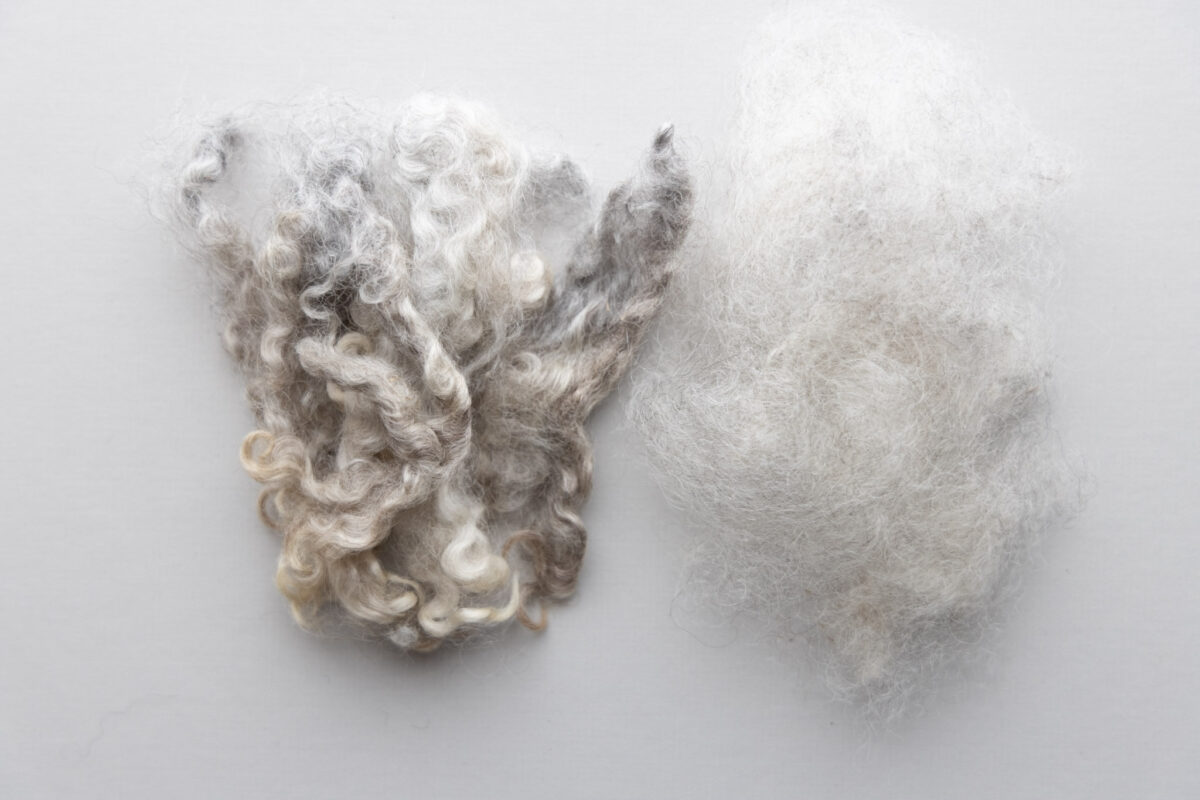
To prepare the Longwools for worsted spinning, think about using wool combs and hackles. Creating worsted preparations will align the fibres, remove shorter fibres, and result in a lovely spinning experience. Hand spinners need to have their hands slightly further apart compared to fine wool spinning due to the longer staple lengths of longwools. Hold the fibres in the fibre supply hand lightly and draft forward in a true worsted fashion for the most dense and lustrous yarn. From a combed preparation, this creates a true worsted yarn. Be sure not to add too much twist, as this will result in rope, but ensure the fibres are twist-locked, meaning they can no longer be drafted apart before winding them into the bobbin. It is often more twist than is initially thought necessary. Sample to figure out how to create a soft-spun yarn that is still structurally sound and will resist pilling. Remember that there will be a halo over time due to the nature of longwools’ tips popping out slightly with use.
Down & Down-Like Wools: Bouncy 3D Crimp
The Downs are like the untapped secret of the hand-spinning world. For so long they were discarded as meat sheep and nothing more but they really are amazing. Resistant to felting, these fibres create yarns that are hard-wearing and fun to spin. I often think of them as completely opposite to the Longwools. Placed side-by-side, the Longwools have their lovely long, wavy locks in contrast to the Downs, which are bouncy, blocky and springy. They have good bulk – meaning their locks bounce back after being squished down in your hands compared to the Longwools, which remain compressed for a while before regaining their shape. Unlike the Longwools, which are best combed, the Downs are best carded and spun in a variety of ways to enhance that bounce and sproing of the fibres. I like to spin my down yarns with lots of air to create lofty, bouncy yarns. Some of the Downs and Down-like Wools that you may have heard of include Suffolk, Oxford, Dorset Horn & Dorset Down (two different breeds, which can be confusing), Hampshiredown, Shropshire, Cheviot, Charollais, and Texel.
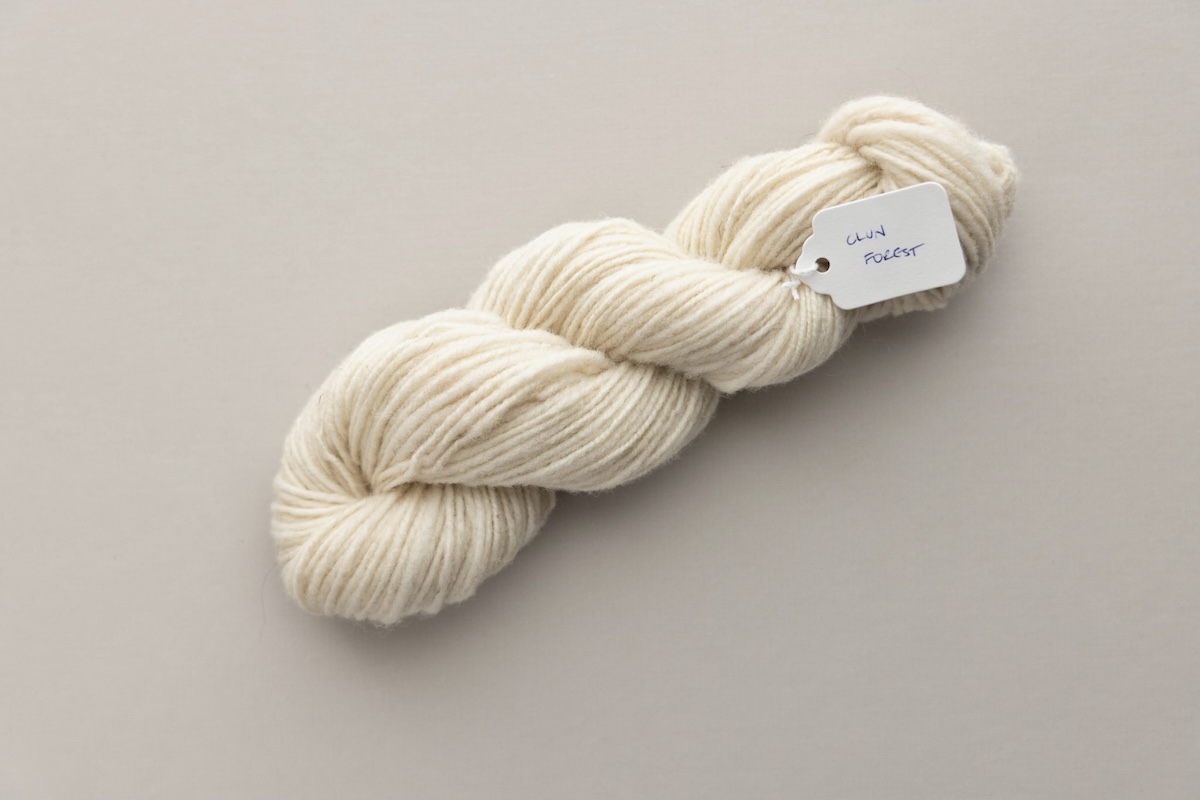
The Downs originated in a part of Southeast England called the Downs, which means ‘hills.’ As I mentioned, they have been largely ignored because they were considered primarily meat sheep, which led to the belief that their wool was worthless. I have noticed in the time I have been hand spinning that this is slowly changing and many are looking to the Down and Down-like breeds for their natural resistance to felting, giving hand spinners a wonderful alternative to the chemical processing needed to create Superwash wools.
The locks of most Down and Down-like Wools are blocky and dense. In my experience, because these fleeces are not being raised for hand spinners, they can be chock full of vegetable matter (VM). They do not have a lot of grease, or lanolin, so they are easy to scour and clean. Shaking out the fleece prior to processing will help to minimize some of the easily removed bits and further processing will remove more.
The crimp structure of the Down and Down-like Wools is most interesting because of the spiral-like nature, which gives it an almost 3-dimensional quality. Smith (2014) wonders if this explains the resistance to felting because the fibres naturally resist one another, rather than fitting together like ‘puzzle pieces’ as we see with the Fine to Longwools (p. 152). With that said, I did have a pair of 100% Cheviot (a Down-like Wool) socks felt from being accidentally placed in the washing machine and dryer. Sample the fabrics for their intended use and see what it takes to get the fabric to felt to prevent any disasters!
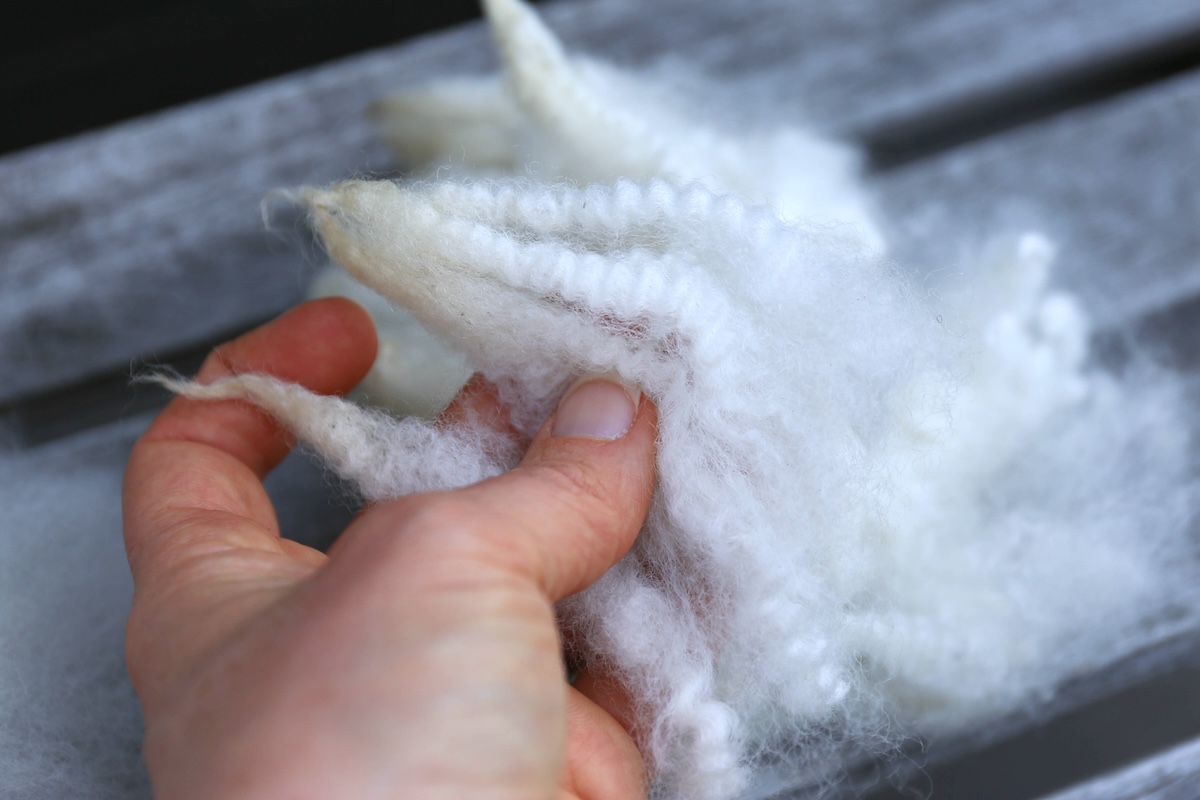
These wools are wonderful for their warmth, durability, springiness and versatility. Over the years, I have carded and combed Down and Down-like Wools with good results. Because the micron counts are usually in the mid-range, assess for next-to-the-skin softness and sample for garments and items that highlight the attributes of these wools best. Some Down Wools will have longer staple lengths that can be easily combed, while many will be shorter stapled, lending themselves to carding. Beautiful woollen-style yarns will appear fuzzy, lacking definition of the individual singles that created the final yarn, with a lot of elasticity and spring. Because the wool will ‘poof’ in the washing process after spinning, spin slightly finer to account for this change in the finished yarn. I tend to add a bit more twist to increase the durability and lessen pilling in the finished fabric.
Primitive & Double-Coated Wools: Multiple Staple Lengths
I absolutely love the Primitive and Double-Coated sheep breeds because I think they have a completely untapped wealth of spinning knowledge to share with us. They have so much to teach us – we just have to be willing to listen. Primitive sheep breeds have usually originated in remote communities, such as the Shetland Islands, and haven’t been ‘improved’ by introducing other breeds. They often have interesting characteristics that they have evolved for that unique environment. As I have spun these wools, using different preparation techniques, I have had increasing success and look forward to spinning them now!
Prior to humans being able to shear, sheep would slough (shed) their coats each year. Some of these Primitive sheep have been crossed with others to create ‘modern’ improved breeds with aspects of the Primitive breed. Not all Primitive breeds are Double-Coated which makes this classification of wool large. Some prefer a ‘miscellaneous’ classification instead. Increasingly, traditionally Double-Coated sheep are being bred to reduce and eliminate the two coats, fostering breeding towards only one coat. When thinking about purchasing wools such as Shetland, check with the sheppard/ess to see if the fleece is Double-Coated or not. Some wools, such as Gotland and Jacob, are not Double-Coated. The crimp structure of all these breeds is unique and can’t be generalized.
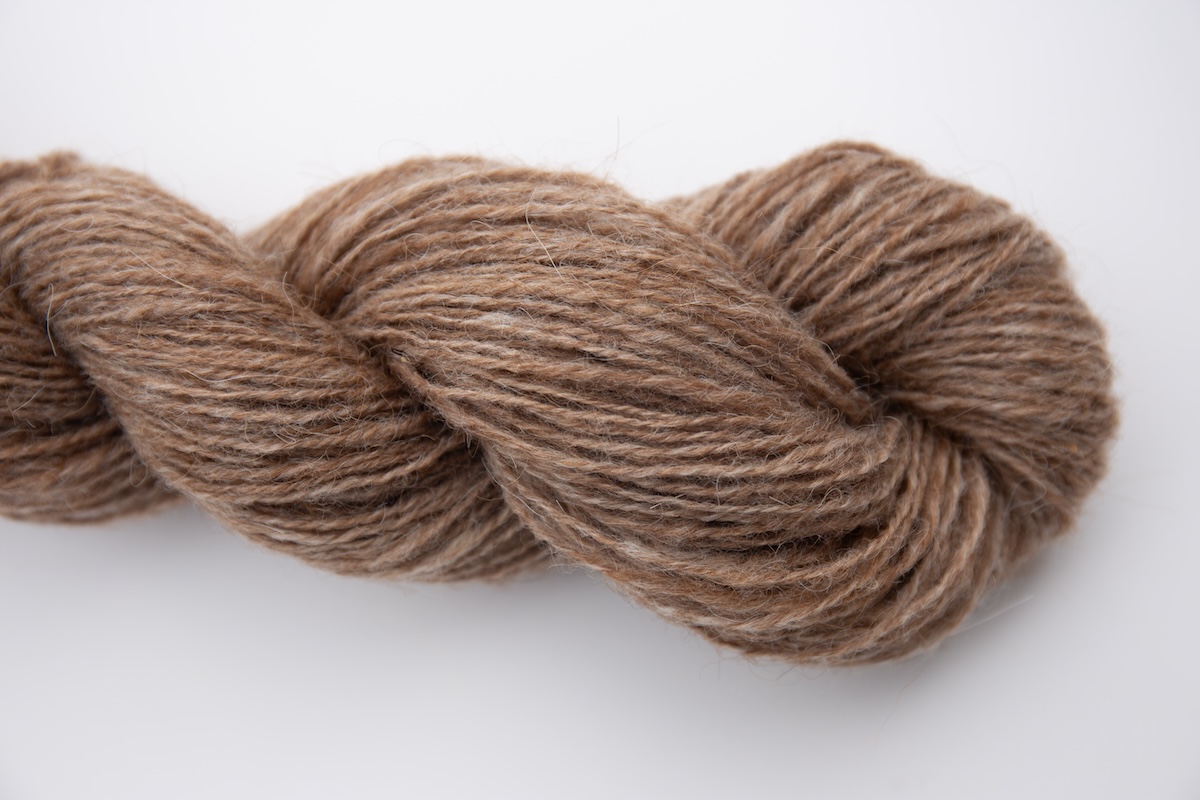
What does it mean to be ‘Double-Coated’? Double-Coated fleeces have two or more types of wool that need to be processed, including longer outer wool and finer, downy inner wool. On Icelandic sheep, these are referred to as ‘tog’ and ‘thel’, respectively. Sometimes there is a third fibre present in these fleeces called kemp, which are short, wiry fibres that often fall out when we are processing the wool. Sometimes, though, they don’t completely fall out and can be present in the spinning and knitting process. Oftentimes, I have pulled them out by hand during the knitting and with wearing, I have found that the last of it falls out over time.
The most common Double-Coated Wools on the market include Shetland and Icelandic. When I was a new spinner, I was intimidated by the idea of working with these wools but time and experience have improved my confidence. These wools offer a lot of choices for hand spinning; therefore, the place to start with these wools is sampling.
The locks of the Double-Coated breeds are triangular in shape, with the wider end at the cut end and the point where the inner and outer coats meet at the tip. This makes it easy to separate the coats by hand! They can be separated before or after washing, the choice lays with the hand spinner. Because it’s natural to wonder about the different yarns that can be created from the inner and outer coats, as well as combined, go ahead and sample. Spinning yarn containing just the outer coat means spinning with little to no crimp. The outer fibres create a dense, heavy yarn and lend themselves to worsted-style spinning, smoothing as the fibres are drafted, for even more strength. Think about rope, rugs and heavy-duty outerwear. The inner fibres are extremely soft and downy so they are often next-to-the-skin soft. They can be carded because they don’t tend to have organized crimp so adding air and loft creates warm, fuzzy yarns. When the inner fibres are spun in a worsted style, this helps with durability.
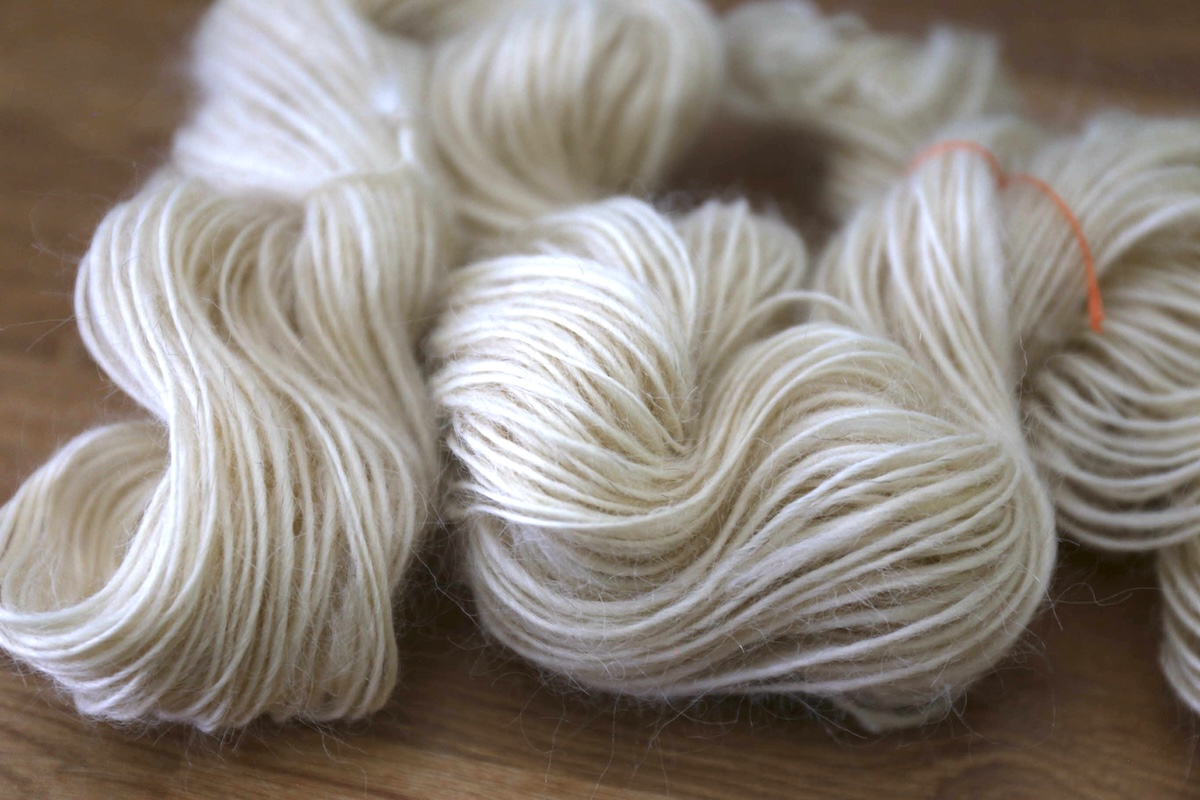
One of the favourite ways to spin these wools is to combine the inner and outer coats in woollen preparations, such as rolags and batts. When the fibres are carded together, and blended thoroughly, as the twist enters the fibres, they are all drawn up at the same time. This creates a more even and consistent yarn compared to a worsted-style yarn, which results in the longer outer fibres often being drawn out and the shorter inner coat fibres left behind.
Because primitive breeds vary so much between each other, be sure to sample and try different fibre preparation techniques to decide how one wool might be spun. There is variation between fleeces from the same breed, as well, so sampling further is important. There are so many choices in how to spin these wools that the knowledge gained from spinning other wool classifications can help guide decisions when spinning these wools.
Conclusions
Over time, my approach to preparing and spinning different wools from the various classifications has evolved and changed. A wonderful place to start is with a Breed Sampler Pack, such as those available from SweetGeorgia. It is important to note that we could choose one specific breed of sheep, spend our entire spinning career just focused on the wool that particular breed produces and we would still discover new things. This article is not meant to be exhaustive but instead, it is meant to provide a good foundation of learning, particularly for those new to spinning specific sheep breeds and recognizing that there are various types of wool. As I learned about different sheep breeds and their woolly characteristics, I realized that this life-long journey I was on to learn about spinning wool would never end.
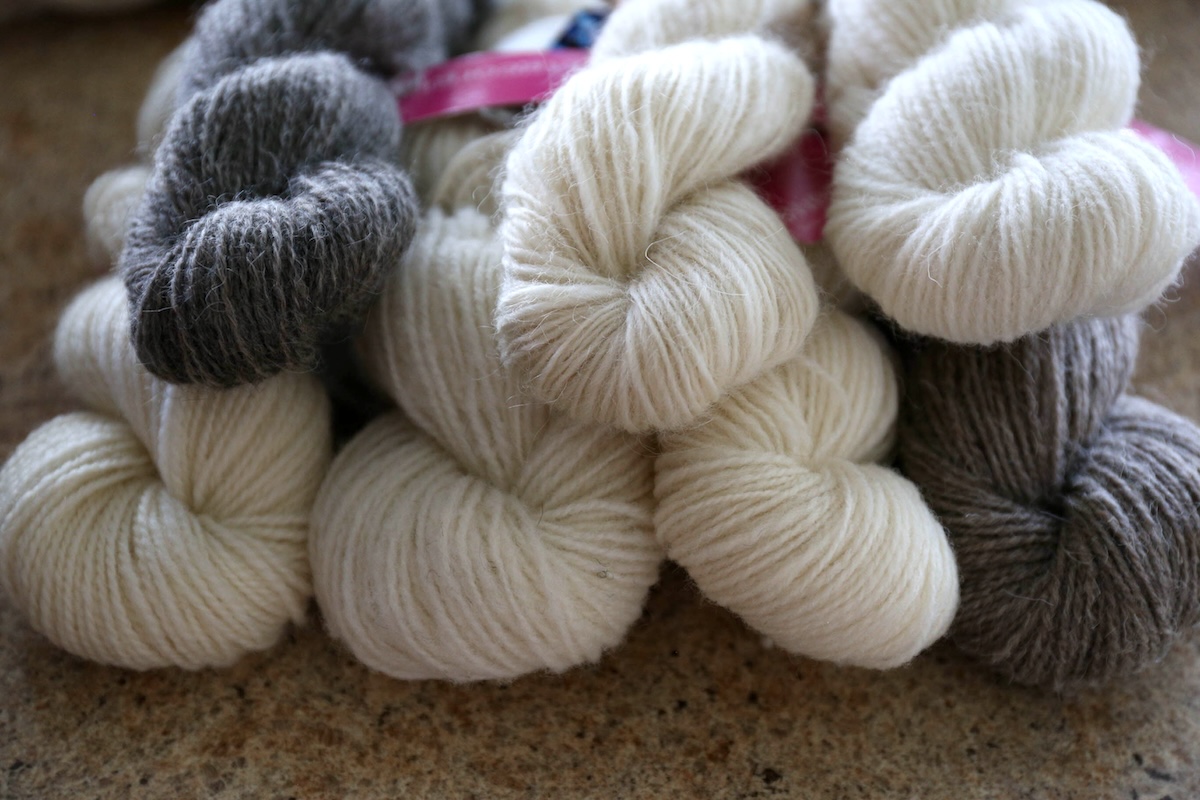
Finally, a wonderful way to begin exploring how the different breeds are different from one another is to swatch a small piece of fabric. Does one feel stiffer or denser? Bouncy or drapey? Beginning to understand how the yarn will act in the finished fabric helps guide early decisions from wool purchases, how to prepare and spin it, and finishing. I wish you the best of luck in your sheep breed explorations.
References & Resources:
- Spinning Sheep Breeds course, Rachel Smith, 2021 (School of SweetGeorgia).
- Spinning Primitive Breeds: How to Spin Icelandic, Jacob, Shetland, and Other Ancient Wools course, Judith MacKenzie, 2015 (Long Thread Media).
- 51 Yarns to Spin Before You Cast Off, Jacey Boggs Faulkner, 2018 (PLY Publishing).
- The Fleece and Fiber Sourcebook, Deborah Robson & Carol Ekarius, 2011 (Storey Publishing).
- The Spinner’s Book of Fleece, Beth Smith, 2014 (Storey Publishing).
Find more spinning articles on our Spinning Craft Guide page!
Interested in exploring more spinning content including online workshops, fibre prep-alongs, online meetups, and more? Come and join us over at the School of SweetGeorgia — with over 100 online courses, a friendly community of multicraftual makers, plus fabulous instructors to help you along the way. Use the code EXPLOREWITHUS to get a 14-day trial for just $1!
The post The Nuances of Different Wools: Sheep Breed Classifications appeared first on SweetGeorgia Yarns.
Comments
Post a Comment